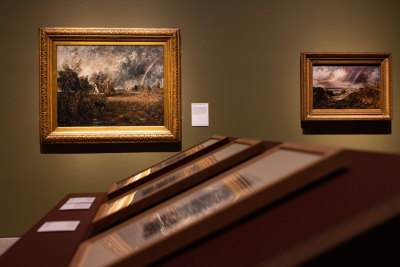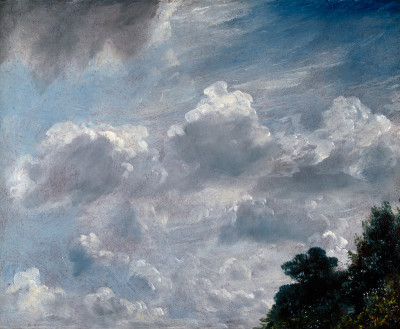Object of the Month: May 2014
Object of the Month: May 2014
Walter Sickert RA, 'Santa Maria della Salute, Venice', c. 1901
By the RA Collection team
Published 8 May 2014
One of the most influential figures in twentieth-century British art, Sickert’s Diploma work uses an impasto style to depict the ornate Baroque decorations of the Santa Maria della Salute in Venice.
-
Walter Sickert’s painting of the great Venetian church of Santa Maria della Salute was probably produced in 1901 during his third stay in the maritime city. This church, with its huge dome, is one of the most recognisable buildings in Venice. It was built according to the designs of Baldassare Longhena between 1631 and 1647 in thanksgiving for the end of a particularly deadly outbreak of plague that afflicted the city in 1630. The name Santa Maria della Salute means Our Lady of Health.
In depicting this iconic building, Sickert chose a particularly low viewpoint, presenting the church rising up out of the Grand Canal with only a small strip of water visible. By concentrating on a single building, Sickert gives a strong, monumental feel to a relatively small canvas. His intention was obviously to convey the sculptural presence of this ornate baroque church with its rich decoration, and for this purpose he adopted a heavier manner than previously, roughly defining the ornamentation with a thick impasto of rich, deep colours. The tonal range is limited and sombre but highlighted by the juxtaposition of light greys and dark greens.
-

Walter Sickert RA, Santa Maria della Salute, Venice, c. 1901.
Oil on canvas. © Royal Academy of Arts, London.
-
Just visible are the artist’s vermilion squaring-up lines revealing that the composition of Santa Maria della Salute was carefully transferred from a preparatory drawing, belying its freely painted appearance. Sickert did not intend these lines to be seen and he once refused payment for a picture on the grounds that “there are certain alterations to be made, those cursed lines in paint of the squaring up… [are]…showing too much.” (Letter from W.R. Sickert to Jacques-Emile Blanche, c.1903).
Elected a Royal Academician in 1934, Sickert originally offered a different painting, Fabia Drake as Lady Macbeth, as his Diploma piece but this was rejected and the Council requested that he “submit some more representative work.” Sickert therefore chose this painting instead, which had previously belonged to a friend and former pupil, Sylvia Gosse, daughter of poet and writer Sir Edmund Gosse.
Sickert’s Santa Maria della Salute is currently on display in Genius and Ambition: The Royal Academy of Arts 1768-1914 at the Bendigo Art Gallery, Victoria, Australia.
See more by Walter Sickert RA in our Collection.




